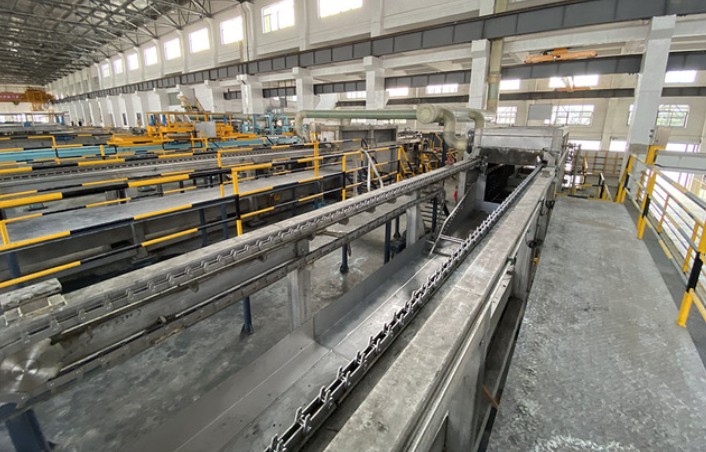NEWS&EVENTS
Home > News&Events > Company news > The functions of the main components inside the antimony electrolytic cell
The antimony electrolytic cell plays a central role in the electrolytic purification of antimony. Its various components work together to achieve efficient antimony purification.
The anode is the source of the antimony to be purified and is typically made from crude antimony. During the electrolysis process, an oxidation reaction occurs at the anode, causing antimony atoms in the crude antimony to lose electrons and transform into antimony ions, which enter the electrolyte. This process is a key step in the transition of antimony from the solid state to the liquid state, paving the way for the subsequent precipitation of antimony ions at the cathode. Simultaneously, impurities in the anode material, depending on their electrochemical properties, will partially remain in the anode mud and partially enter the electrolyte, thus achieving a preliminary separation of antimony from some impurities.

The cathode, made of pure antimony or stainless steel, serves as the starting plate for the precipitation of high-purity antimony products. In the electrolyte, antimony ions migrate toward the cathode under the influence of the electric field. There, they gain electrons, undergo a reduction reaction, and are reprecipitated as metallic antimony. By controlling the electrolysis conditions, the precipitated antimony can be of high purity, meeting the high-purity antimony requirements of various industrial sectors. The electrolyte is typically an acidic solution containing antimony ions, such as a mixture of hydrofluoric acid and sulfuric acid. As a medium for the migration of antimony ions, it not only provides a suitable environment for their dissolution and precipitation but also influences the rate and efficiency of the electrolytic reaction. Appropriate electrolyte composition and concentration help improve current efficiency and minimize side reactions.
The tank, a corrosion-resistant container, provides a stable space for the electrolysis process, holding the electrolyte and electrodes. Its excellent corrosion resistance ensures that it will not be damaged by electrolyte erosion during long-term use, ensuring the continuity and stability of the electrolysis process.